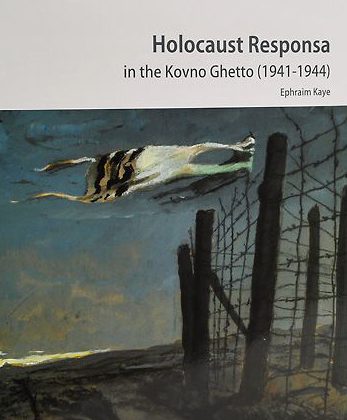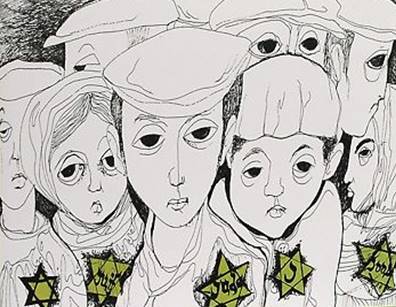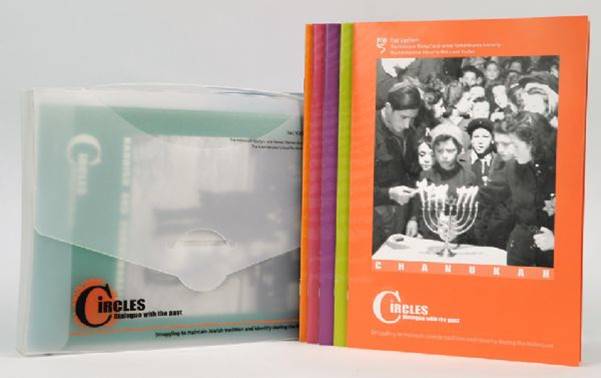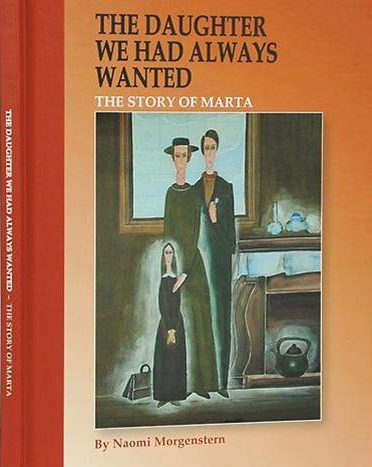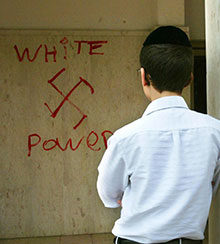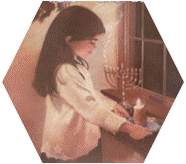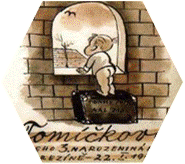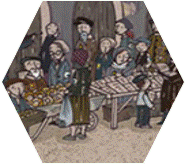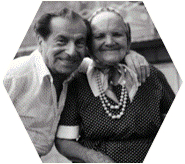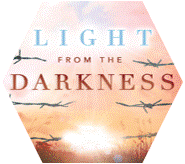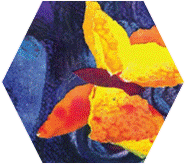Middle School Lesson Plans
Grades 6 to 8
Responsa from the Kovno Ghetto is a resource highlighting issues of Jewish religious law that arose in the ghetto in Kovno, Lithuania, an ancient center of Jewish learning. Amidst the terror and persecution, and in the abnormal conditions of the ghetto, the Jews could no longer adhere to their customs and mitzvot. This guide outlines how rabbis were called upon to answer numerous issues of Jewish law and grapple with ethical dilemmas. The responsa (rabbinic discussions of questions) in this book can lead to fascinating discussions about how best to answer these questions. Be sure to note the alternative answers to some of the questions presented in the book’s footnotes.
This is a particularly good complement to the ISJL 6th grade curriculum.
Lesson plan for Responsa from the Kovno Ghetto (PDF)
You can purchase Responsa from Yad Vashem’s website or from us as part of a kit.
Through Our Eyes contains a collection of excerpts from Jewish children’s diaries and Holocaust survivor testimonies. This book provides a chronological overview and highlights the perceptions of children from before the war through its aftermath. Through poetry, diaries and testimonies, Through Our Eyes reveals the thoughts and feelings of children and teenagers confronted by death and destruction. The book gives an insight into the world of the children who lived during the wartime period who were approximately the same age as the readers themselves.
At Congregation Kol Ami, we use this in our 6th grade class in conjunction with Return to Life, a kit focused on the time directly after the war ended. The Return to Life kit comes with posters, a teacher’s guide, and a 60 minute video. We use this because although Though Our Eyes has a small section on the period after the war, we found it insufficient for the purpose. Consider using the Return to Life unit to teach this essential part of the story and as a complement to Through Our Eyes.
Lesson plan for Through Our Eyes and Return to Life (PDF)
You can purchase Through Our Eyes and Return to Life separately from Yad Vashem or from us as part of a kit.
Circles
Circles is a teaching unit designed for middle school students, focusing on topics that reflect Jewish observance during the Holocaust. The curriculum discusses Jewish religious traditions and how Jews struggled to maintain their customs during the Holocaust. The following topics are covered: Tu B’Shvat, Chanukah, Purim, Passover, Bar/Bat Mitzvah, Brit Milah, Prayer, Shabbat, and Kaddish and Commemoration.
Circles is a particularly good unit for 7th graders, who are going through the Bar/Bat Mitzvah process. Each topic has a booklet with quotes and suggested discussions. Choose topics based on the interest and maturity level of your students.
You can purchase Circles from Yad Vashem online or from us as part of a kit.
The Daughter We Had Always Wanted
The Daughter We Had Always Wanted is the story of Marta, a young Jewish child who lived in Czortkow, Poland. At the age of eight, Marta was sent by her mother to live under an assumed identity with a non-Jewish family in Warsaw who risked their lives to protect her. After the Holocaust, Marta immigrated to Israel and began to rebuild her life despite various hardships. Today, Marta Goren is a great-grandmother who lives in Rehovot, Israel. In this age-appropriate memoir, Marta recalls her childhood experiences before, during, and after the Holocaust. Marta includes her address in the memoir and encourages students to write to her. You can take advantage of this as an extension activity for this book.
This story opens the idea of children in hiding and the difficulties of living under an assumed identity. When the war ends, Marta finds it difficult to return to her old identity. For older students, these pages could lead to an interesting discussion of their Jewish identity and how they feel about it. In addition, this book includes stories of the hardships experienced by non-Jews in Poland, which could open an interesting discussion about non-Jewish victims of the Holocaust, an important addition at this age.
This book can add depth and discussion to the in-depth ISJL 8th grade Holocaust curriculum.
Lesson plan for The Daughter We Had Always Wanted (PDF)
You can purchase The Daughter We Had Always Wanted from Yad Vashem or from us as part of a kit.
Using Facts to Respond to Anti-Semitism
Using Facts to Respond to Anti-Semitism is a teaching unit designed by the Anti-Defamation League for middle and high school students. When learning about the Holocaust, students often see anti-Semitism as a thing of the past, something that ended in the great conflagration of the Holocaust. We know, of course, that the hatred and intolerance of anti-Semitism remain powerful and significant realities today. Many of our students experience incidents in their secular schools.
This lesson introduces students to factual information that refutes commonly circulated anti-Semitic myths. Applying this newly acquired information to anti-Semitic case studies, students can begin to develop effective responses to anti-Semitic incidents. By generating ideas in a small group setting, students will also learn from each other and increase their skill set when responding to anti-Semitism and other forms of bigotry.
Complete lesson plan (from the education-outreach section of the ADL’s website).
In each age group, it is worth considering re-using some of the curricula designed for younger students and addressing it at a higher level.
To my dearest Tommy, for his Third Birthday in Theresienstadt, 22 January 1944 can make a nice, in-depth unit for middle schoolers, especially if they used is when they were younger. At this age you can discuss the other paintings that Tommy’s father made and what was going on in the ghetto that Tommy was not aware of. Along with other artists, Tommy’s father (Bedřich Fritta) was forced to make propaganda art for the Nazis. But in his free time, he drew pictures of what was really happening in the ghetto. The difference is striking. A good source for information about Fritta’s other artwork is the Jewish Museum in Berlin’s exhibit of them. Yad Vashem also has resources for teaching the Holocaust through art, music, poetry, and literature.

